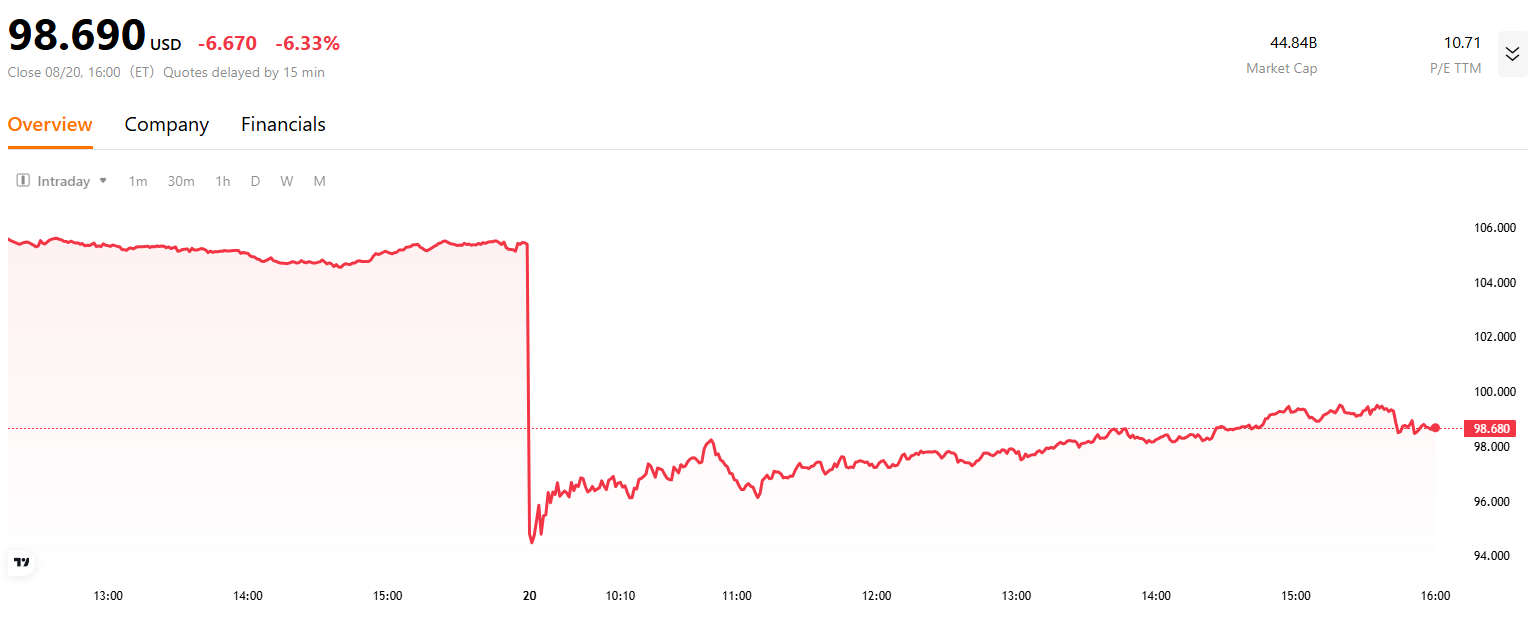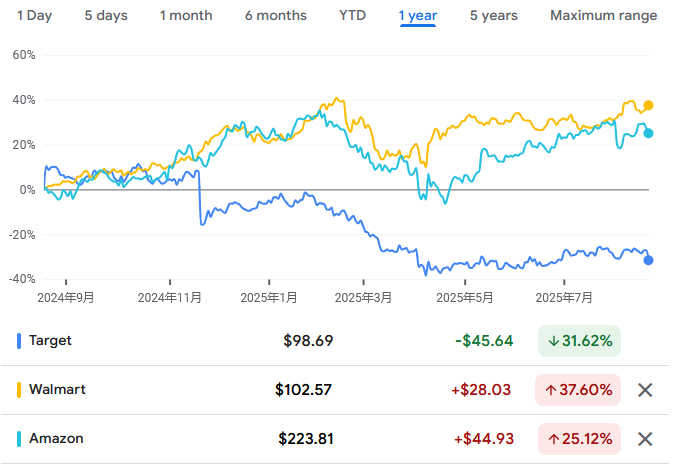Target Stock Plummets 11% on Leadership Shakeup
TradingKey - Target Corporation announced Michael Fiddelke, a 20-year veteran, will succeed Brian Cornell as CEO. Despite the retailer’s Q2 results exceeding expectations with revenue and same-store sales showing signs of recovery, the stock plummeted following the leadership change announcement, briefly falling as much as 11%. Though it pared losses later, shares closed down 6.33%.

Source: TradingKey
The 51-year-old Fiddelke joined Target as an intern in 2003 and spent two decades rising through the ranks. He served as CFO for five years and has been COO since February 2024, overseeing nearly 2,000 stores and the global supply chain.
Per the announcement, Cornell will transition to Executive Chairman, focusing on board governance. While Fiddelke is regarded as a "business generalist," his promotion appears to have failed to win broad market approval.
Target currently faces prolonged sales slumps and competitive disadvantages. The retailer trails Walmart and Amazon on price and convenience while grappling with declining product appeal, chaotic store management, and inventory shortages that have frustrated customers. This predicament is reflected in its stock performance: Target has fallen over 30% in the past year, significantly underperforming major competitors.

Source: Google Finance
Amid mounting pressures, Fiddelke acknowledged "critics are plentiful" in an internal meeting, stressing "only concrete action will prove doubters wrong."
He outlined three core initiatives to reignite growth:
Reclaiming "Fashion-Forward" Identity: Restarting the "Style & Design" program to refocus on trend-driven categories like sports apparel and electronics, rebuilding its core strength as a style leader.
Fiddelke admitted past overemphasis on "core categories" caused Target to "lose its fashion edge." “Our unique lane in retail is when we lead with style and design,” he said. “That’s the North Star.”
Omnichannel Experience Upgrade: Addressing complaints about store disarray and inconsistent service through standardized in-store management; simultaneously doubling down on e-commerce, which saw 4.3% sales growth in Q2.
Technology-Driven Cost Efficiency: Optimizing supply chains through digitalization, diversifying global suppliers to reduce tariff dependency, and explicitly stating "price hikes are a last resort" to tackle competitiveness issues.



